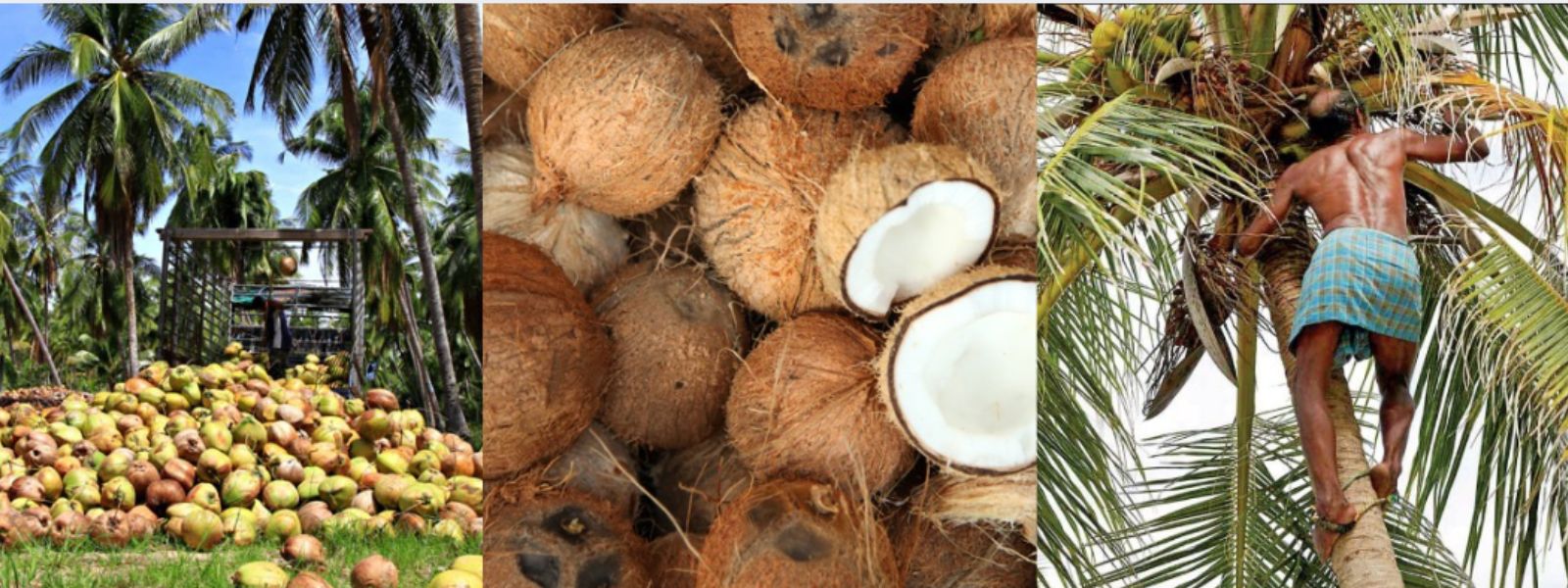
Government Grapples to Revive Coconut Exports by 2026
- CNL Reporter
- August 20, 2025
- Business News, Political
- Coconut Exports
- 0 Comments
News of the Day
Sri Lanka’s coconut industry, once hailed as the “tree of life” sector of the economy, is now at a crossroads.
After decades of being a reliable export earner through desiccated coconut, virgin oil, activated carbon, and coir products, the sector is struggling to keep pace with global competition.
Exports in the first seven months of 2025 stood at around USD 450 million — a drop from USD 510 million a year earlier, reflecting weakening demand and production bottlenecks.
Yet, experts say that with the right policy direction, Sri Lanka could restore momentum and double export earnings within five years. The outlook for 2026 hinges on whether the government takes decisive steps to address structural weaknesses in the industry.
Challenges Holding Back Growth
Smallholder dominance — nearly 80 percent of coconut land — means fragmented production, aging trees, and limited adoption of scientific farming methods.
Irregular rainfall and droughts, especially in coconut belts such as Kurunegala and Puttalam, have disrupted harvests.
Rising fertilizer and labor costs further squeeze farmers. Meanwhile, competitors like Indonesia and the Philippines benefit from large-scale plantations, advanced processing technologies, and aggressive trade policies, leaving Sri Lanka vulnerable.
The Policy Vacuum
Industry stakeholders repeatedly stress the absence of a coherent national policy. While ad-hoc initiatives have been launched over the years, there is still no long-term strategy to ensure sustainability. Promises of replanting programs and irrigation development remain underfunded. Without guaranteed minimum prices, farmers are discouraged from investing in new cultivation.
Opportunities for Recovery
Analysts believe 2026 could mark a turning point if the government adopts targeted reforms. First, a nationwide replanting initiative with high-yielding hybrid varieties could boost nut output significantly within five years.
Second, irrigation facilities and climate-resilient farming practices would help mitigate the impact of erratic weather. Third, incentives for value addition — such as tax concessions for virgin coconut oil, coconut-based snacks, and bio-products — could enhance export competitiveness.
Equally important is a price stabilization mechanism that ensures fair farmgate prices even when global prices fluctuate. This would encourage growers to expand cultivation instead of abandoning coconut for more lucrative crops.
Global Market Outlook
Demand for coconut-based products is expected to grow steadily, especially in the health and wellness market in Europe, North America, and East Asia. Virgin coconut oil and activated carbon already enjoy premium demand. If Sri Lanka strengthens branding and quality certification, it could capture a larger share of these niche markets.
The Road Ahead
The next year will be critical. If reforms are delayed, Sri Lanka risks further decline in exports and losing market share to regional competitors. But with coordinated action, the coconut sector could re-emerge as a billion-dollar export industry by the end of the decade.
As one industry expert summed it up: “Coconut is not just an agricultural product; it is a strategic resource. If we fail to protect and modernize it now, we may lose an industry that has fed our economy for generations.”

